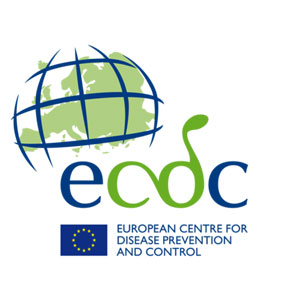
What is the ideal indoor humidity?
The majority of professional bodies recommend an ideal indoor humidity of 40-60%RH. Humidity below this level can dry out the nose and throat, leading to an impaired respiratory immune system response. Low humidity also increases the time potentially virus carrying aerosols can remain airborne and infectious. Humidity above this ideal level can promote mould or damage to building fabric.
The below is a summary of recent guidelines and industry recommendations on indoor humidity levels, with particular reference to COVID-19 safe operating procedure. Links provide access to the source document or webpage and are correct at time of publishing.
Get expert advice on maintaining 40-60%RH
GOV.UK: Role of Ventilation in Controlling SARS-CoV-2 Transmission SAGE-EMG Oct 2020
“Virus survival increases with decreasing temperature and humidity.
In most buildings maintaining comfortable temperatures and humidity above 40%RH is likely to be beneficial for reducing risk.”


CIBSE: COVID-19 Ventilation Guidance May 2020
4.2.1 Mechanical ventilation > Supply / Extract
“Relative humidity should be kept at above 40% wherever possible.”
Click here to access this document
CIBSE: Health & Wellbeing in Building Services TM40:2020
"The recommended relative humidity range is 40 – 60% in dwellings and air conditioned buildings, 40 –70% elsewhere.”


HSE: Sick Building Syndrome: Guidance for specialist inspectors
“Levels of relative humidity in the range of 40 to 70% are recommended for the workplace environment.”
Click here to visit this webpage
HSE: Display Screen Equipment Regulations 1992
"Ventilation and humidity should be maintained at levels which prevent discomfort and problems of sore eyes.”


Institute of Air Quality Management: Indoor Air Quality Guidance: Assessment, Monitoring, Modelling and Mitigation, Sep 2021
"Good-practice RH is between 40% and 60%..."
"Beyond drying out skin, eyes and nose, low humidity increases the rate of transmission of viruses, such as influenza, and may have a direct impact on absenteeism. Recent studies have shown that these low RHs can also affect occupant wellbeing and productivity."


ASHRAE Epidemic Task Force: Building Readiness September 2020
“maintaining the space relative humidity between 40% and 60% decreases the bio-burden of infectious particles in the space and decreases the infectivity of many viruses in the air.”
Click here to visit this webpage
ASHRAE Epidemic Task Force: Reopening Guide for Schools and Universities July 2020
“Winter classroom design guidelines 22°C (72F) and 40-50% RH
Summer classroom design guidelines 24°C (75F) and 50%-60% RH”


European Centre for Disease Prevention and Control: HVAC systems in the context of COVID-19 Nov 2020
“A relative humidity of 40–60% may help to limit the spread and survival of SARS-CoV-2 within a closed space. Humidity levels in this range could therefore be considered for HVAC systems."


Government of Canada: Using Ventilation and filtration to reduce aerosol transmission of COVID-19 in long-term care homes
"While humidifiers do not remove SARS-CoV-2 virus from the indoor air environment, relative humidity may impact the duration that particles that contain virus are suspended in the air, and how long they remain infectious. It is therefore important to maintain an optimal humidity level, between 40% and 60% in indoor settings. Lower humidity levels can cause droplets to shrink, and smaller particles (e.g., aerosols) can stay suspended in the air for longer."


Fachverband Gebäude-Kilma e.V.: Operation of ventilation and air-conditioning systems under the boundary conditions of the current Covid-19 pandemic Aug 2020
"Devices with humidification should be set to an acceptable humidity (40 to 60%) because:
− the vulnerability of humans to infections is relatively reduced by a suitable air humidity
− if the air is too dry, the droplets shrink more due to evaporation and remain suspended for a longer time (aerogenic transfer)
− particles adhere better to surfaces at higher relative air humidity and are less whirled up and
− most seasonal respiratory viruses are inactivated in the medium humidity range of 40 - 60%."


AIRAH: Common questions about COVID-19 and air conditioning and refrigeration systems - Sep 2020
"Keeping relative humidity between 40 and 60 per cent will create conditions that reduce the risk of infection through inhalation of airborne droplets carrying the virus.”
"Low humidity in occupied buildings should be avoided as this can dry out the mucous membrane which is one of our primary means of defence."


ISHRAE: COVID-19 Guidance Document for Air Conditioning and Ventilation Apr 2020
"All things considered, the relative humidity level of 40%~70% is considered to be the most suitable environment for humans & decreases problems from pathogens.”
“In dry climates, do not allow Relative Humidity to fall below 40%."


Get expert advice on how to maintain the recommended 40-60%RH in your building

HEALTH PODCAST
Check out this podcast on how maintaining 40-60% relative humidity indoors is important in combatting the spread of viral infection.